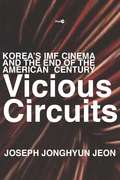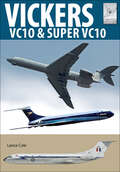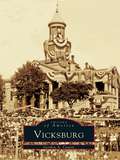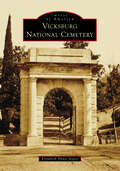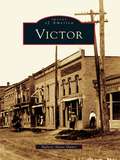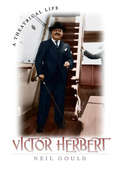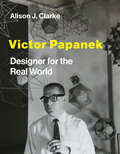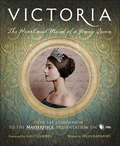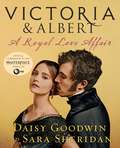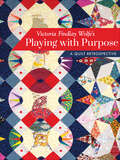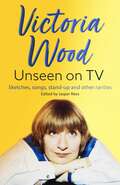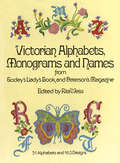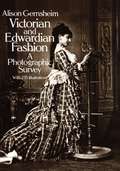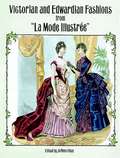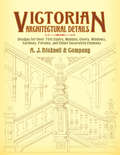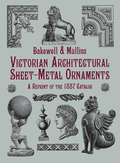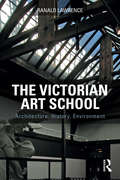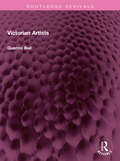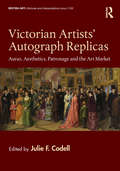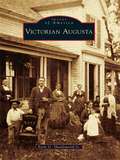- Table View
- List View
Vibrazioni Rock
by Daniel IchbiahNatale 1976: il nuovo album degli Eagles arriva sugli scaffali. Una settimana dopo, un milione di copie vengono vendute. Eppure nessuno sa che Hotel California, puro momento di grazia musicale, è nata in un‘atmosfera in cui c’era una tensione infernale. In quel periodo, c’era burrasca tra i membri del gruppo e spesso arrivano addirittura alle mani dopo un concerto. È proprio vero, le canzoni di punta del rock hanno tutte la loro storia e sono affascinanti. Like a Rolling Stone, Stairway to Heaven, Mélodie Nelson, Sultans of Swing, Losing my religion, oppure Un autre monde e Smells Like Teen Spirit e molti altri successi mitici non sono altro che il risultato perfetto della passione e del romanticismo che solo il rock poteva creare. Dietro le quinte delle grandi etichette, guadagnando la fiducia sia degli autori che dei musicisti, Daniel Ichbiah ha fatto le sue ricerche e ha ricostruito il puzzle del successo dagli Stones ai Nirvana passando per Bashung. Che dire? Raccontare la genesi dei successi del rock non è stato facile. Ma più di un lettore lo ha ammesso: è impossibile lasciare andare queste pagine una volta che ci si è avventurati nei meandri di molte canzoni diventate mitiche. Ricco di rivelazioni, impregnato di testimonianze esclusive, questo documento d'eccezione ci trascina nel cuore delle canzoni che hanno segnato la nostra epoca. Raccontandoci l'elaborazione e le saghe di successi leggendari, Vibrazioni Rock ci fa rivivere il brivido di decenni di storia del rock.
Vicarious Kinks
by Ummni KhanWho decides where "normal" stops and "perverse" begins? In Vicarious Kinks, Ummni Khan looks at the mass of claims that film, feminism, the human sciences, and law make about sadomasochism and its practitioners, and the way those claims become the basis for the legal regulation of sadomasochist pornography and practice. Khan's audacious proposal is that for film, feminism, law, and science, the constant focus on taboo sexuality is a form of "vicarious kink" itself.Rather than attempt to establish the "truth" about sadomasochism, Vicarious Kinks asks who decides that sadomasochism is perverse, examining how various fields present their claims to truth when it comes to sadomasochism. The first monograph by a new scholar working at the juncture of law and sexuality, Vicarious Kinks challenges the myth of law as an objective adjudicator of sexual truth.
Vicious Circuits: Korea’s IMF Cinema and the End of the American Century (Post*45)
by Joseph Jonghyun JeonIn December of 1997, the International Monetary Fund announced the largest bailout package in its history, aimed at stabilizing the South Korean economy in response to a credit and currency crisis of the same year. Vicious Circuits examines what it terms "Korea's IMF Cinema," the decade of cinema following that crisis, in order to think through the transformations of global political economy at the end of the American century. It argues that one of the most dominant traits of the cinema that emerged after the worst economic crisis in the history of South Korea was its preoccupation with economic phenomena. As the quintessentially corporate art form—made as much in the boardroom as in the studio—film in this context became an ideal site for thinking through the global political economy in the transitional moment of American decline and Chinese ascension. With an explicit focus of state economic policy, IMF cinema did not just depict the economy; it also was this economy's material embodiment. That is, it both represented economic developments and was itself an important sector in which the same pressures and changes affecting the economy at large were at work. Joseph Jonghyun Jeon's window on Korea provides a peripheral but crucial perspective on the operations of late US hegemony and the contradictions that ultimately corrode it.
Vickers VC10: An Icon Of The Air (FlightCraft #20)
by Lance Cole“A comprehensive history of the VC10 . . . enhanced by the fabulous artwork and photographs . . . will take you back to the golden age of jet travel.” —Flight Line Book ReviewDesigned and manufactured by the men who would make Concorde, the Rolls-Royce powered Vickers VC10, and its larger variant, the Super VC10, represented the ultimate in 1960s subsonic airliners. The VC10 was Britain’s answer to the Boeing 707 and the Douglas DC-8, but it could take off in a very short distance, climb more steeply, and land at slower speed than its rivals. These were vital safety benefits in the early years of the jet age. At one stage, the Super VC10 was the biggest airliner made in Europe and the fastest in the world.On entry into service, both the VC10 and the longer Super VC10 carved out a niche with passengers who enjoyed the speed, silence and elegance of the airliner. Pilots, meanwhile, loved its ease of flying and extra power. Yet the VC10 project was embroiled in machinations across many years and more than one government. Questions were asked in parliament and the whole story was enmeshed in a political and corporate affair that signified the end of British big airliner production. Yet the men who made the VC10 also went on to design and build Concorde. Many VC10 pilots became Concorde pilots.In service until the 1980s with British Airways, and until 2013 with the RAF, the VC10 became a British icon and a national hero, one only eclipsed by Concorde. It retains a place in the hearts and minds of enthusiasts the world over.“A good one-stop reference to the VC10.” —Scale Aviation Modeller International
Vicksburg: Town and Country
by Gordon CottonThough best known for the forty-seven-day siege many think sealed the fate of the Confederacy, Vicksburg, Mississippi boasts several claims to fame. Located near the site of the first European settlement in the state, Vicksburg is also the first place in America where Coca-Cola was bottled and home to such historic figures as Jefferson Davis and Madam C.J. Walker. Within these pages, Vicksburg and its environs are explored and celebrated through the eyes of late-nineteenth- and twentieth-century photographers. From downtown street scenes to pastoral rural landscapes, Vicksburg: Town and Country is a compilation of photographs from 1870 to the present day. Coupled with informative captions,each image is a slice of history and a unique treasure for anyone seeking to understand the past. Born of the river, Vicksburg is a modern, bustling port and the scene of the best-marked battlefieldin the world, the Vicksburg National Military Park. From soldiers to scientists, merchants to educators, a colorful cast of characters has shaped the history of Vicksburg. City dwellers and rural residents alike are a part of this fascinating visual journey.
Vicksburg
by Gordon A. CottonVicksburg, situated on the bluffs overlooking the Mississippi River, has played an important role in the state's history, from its heroic participation in the War Between the States to its continued contributions to Mississippi's churches, architecture, cotton farming, and industrial markets. Today a modern city, Vicksburg still embraces its Southern charm with its shady, tree-lined brick streets, well-kept historic buildings, and beautiful plantation homes. In this volume of over 200 images, you will experience Vicksburg as never before, viewing this fascinating river town throughout its years of growth and progress. Within these pages, the reader can trace the evolution of the scattered farms that evolved into plantations and the small trading posts that became successful mercantile establishments. Vicksburg brings to life many of the old ways: scenes of Catfish Row, where steamboats docked and laughter emanated from the waterfront shanties; images of famous actors who gave routine performances in the elegant Walnut Street Opera House; snapshots capturing the excitement of outdoor baptisms, parades, and political rallies; magnificent scenes of the Old Court House, the proud symbol of Vicksburg for over a century; and pictures and portraits of the soldiers, merchants, government officials, and everyday citizens who have called Vicksburg home.
Vicksburg National Cemetery (Images of America)
by Elizabeth Hoxie JoynerThis volume explores the history of Vicksburg National Cemetery, reveals recent discoveries, and notes how the addition of various elements through the years helped to beautify this sacred ground. It examines the lives of a small fraction of the cemetery's approximately 18,000 interments, which include veterans of the Mexican-American and Civil Wars through the Korean War and three Vietnam memorials. Included among the interments are cemetery superintendents, a Civil War nurse, a female veteran, a member of a popular local band (the Red Tops), a former Vicksburg alderman, a Tuskegee airman, and a Vick family descendant (Vicksburg's namesake). Military service is the common thread that all of them share. This book focuses on the untold stories of those interred within the hallowed ground of Vicksburg National Cemetery. Elizabeth Hoxie Joyner--a retired employee of the National Park Service, museum curator, and author of USS Cairo in Arcadia Publishing's Images of Modern America series--has tracked down images from a variety of sources around the country to illustrate who these people were, what they did, and the sacrifices they made to protect this great nation. A burial index is also included that documents the section and number of each interment to aid in grave location.
Victor
by Babette Mann HuberVictor tells the unique story of a historic community in the Finger Lakes region, just south of Rochester. It chronicles Victor's past as a Seneca Indian capital to the coming of Massachusetts settlers in the 18th century through to life as it was in the 20th century. With over 200 photographs, this book shows how people in rural upstate New York lived, played, studied, worked, and worshiped. The images are from the town and village archives, the Victor Historical Society, the Ontario County Historical Society, and private collections. Many are previously unpublished photographs, and several are by Fred Locke, an amateur photographer who is considered to be "the father of porcelain insulators."
Victor Arnautoff and the Politics of Art
by Robert W. ChernyVictor Arnautoff reigned as San Francisco's leading mural painter during the New Deal era. Yet that was only part of an astonishing life journey from Tsarist officer to leftist painter. Robert W. Cherny's masterful biography of Arnautoff braids the artist's work with his increasingly leftist politics and the tenor of his times. Delving into sources on Russian émigrés and San Francisco's arts communities, Cherny traces Arnautoff's life from refugee art student and assistant to Diego Rivera to prominence in the New Deal's art projects and a faculty position at Stanford University. As Arnautoff's politics moved left, he often incorporated working people and people of color into his treatment of the American past and present. In the 1950s, however, his participation in leftist organizations and a highly critical cartoon of Richard Nixon landed him before the House Un-American Activities Committee and led to calls for his dismissal from Stanford. Arnautoff eventually departed America, a refugee of another kind, now fleeing personal loss and the disintegration of the left-labor culture that had nurtured him, before resuming his artistic career in the Soviet Union that he had fought in his youth to destroy.
Victor Fleming: An American Movie Master (Screen Classics)
by Michael SragowThis definitive biography chronicles the life and work of the legendary director of Gone With the Wind and The Wizard of Oz.Victor Fleming was the most sought-after director in Hollywood’s golden age, renowned for his work across an astounding range of genres—from gritty westerns to screwball comedies, romances, boddy pictures, and family entertainment. Yet this chameleon-like versatility has resulted in his relative obscurity today—despite his having directed two of the most iconic movies of all time.Fleming is best remembered for Gone With the Wind and The Wizard of Oz, but he directed more than forty films, including classics like Red Dust, Test Pilot, Dr. Jekyll and Mr. Hyde, and Captains Courageous. Fleming created enduring screen personas for Clark Gable, Spencer Tracy, and Gary Cooper, as well as for Ingrid Bergman, Clara Bow, and Norma Shearer—who were among his many lovers.In this definitive biography, Michael Sragow restores the director to the pantheon of great American filmmakers, correcting a major oversight in Hollywood history. It is the dramatic story of a man at the center of the most exciting period in American filmmaking.
Victor Herbert: A Theatrical Life
by null Neil GouldVictor Herbert is one of the giants of American culture. As a musician, conductor, and, above all, composer, he touched every corner of American musical life at the turn of the century, writing scores of songs, marches, concerti, and other works. But his most enduring legacy is on a different kind of stage, as one of the grandfathers of the modern musical theater.Now, Victor Herbert has the biography he deserves. Neil Gould draws on his own experience as a director, producer, and scholar to craft the first comprehensive portrait in fifty years of the Irish immigrant whose extraordinary talents defined the sounds of a generation and made contemporary American music possible.Mining a wealth of sources—many for the first time—Gould provides a fascinating portrait of Herbert and his world. Born in Dublin in 1859, Herbert arrived in the United States in 1886. From his first job in the orchestra pit of the Metropolitan Opera, Herbert went on to perform in countless festivals and concerts, and conduct the Pittsburgh Orchestra. In 1894, he composed his first operetta, Prince Ananias, and by the time of his death in 1924, he’d composed forty-two more—many of them, such as Naughty Marietta, spectacular Broadway hits. Along the way, he also wrote two operas, stage music for the Ziegfeld Follies, and the first full score for a motion picture, The Fall of a Nation.Gould brilliantly blends the musical and the theatrical, classical and popular, the public and the private, in this book. He not only gives a revealing portrait of Herbert the artist, entrepreneur, and visionary, but also recreates the vibrant world of the Herbert’s Broadway. Gould takes us inside the music itself—with detailed guides to each major work and recreations of great performances. He also makes strong connections between Herbert’s breakthrough compositions, such as the operetta Mlle. Modiste, and the later contributions of Rudolf Friml,Sigmund Romberg, Jerome Kern and other giants of the musical theater.As exuberant as Herbert himself, this book is also a chronicle of American popular culture during one of its most creative periods. For anyone enraptured by the sound of the American musical, this book is delightfully required reading.
Victor Papanek: Designer for the Real World
by Alison J. ClarkeThe history and controversial roots of the social design movement, explored through the life and work of its leading pioneer, Victor Papanek.In Victor Papanek: Designer for the Real World, Alison Clarke explores the social design movement through the life of its leading pioneer, the Austrian American designer, theorist, and activist Victor Papanek. Papanek's 1971 best seller, Design for the Real World: Human Ecology and Social Change has been translated into twenty-two languages and never fallen out of print. Its politics of social design, anti-corporatism, and environmental sustainability have found renewed pertinence in the twenty-first century and dominate the agendas of design schools today. Drawing extensively on previously unexplored archival sources, Clarke uncovers and contextualizes the movement's controversial origins and contradictions.
Victoria: The Heart and Mind of a Young Queen
by Helen RappaportThe official companion to the Masterpiece series on PBS, exploring the history behind the show.Discover the world of the young Victoria, a world of court drama, sumptuous splendor, and the epic tale of an unexpected queen.At only eighteen years old, Victoria was a rebellious and headstrong teenager when she ascended the throne as Queen of Great Britain, but she grew to become one of the most memorable, unshakable, and powerful women in history. Tracing the coming-of-age of one of Britain’s greatest monarchs, this official companion to the Masterpiece series on PBS reveals her triumphs over scandal and corruption, and the intimate loves, heartbreaking losses, fallouts, and family dramas that accompanied her early reign.Written by internationally bestselling author and Victoria historical consultant Helen Rappaport, and including a foreword by Daisy Goodwin—acclaimed novelist and screenwriter of the series—Victoria details the history behind the show. It includes fascinating letters from the Queen, her family, confidants, and Prince Albert, offering truly authentic insight into the private life of the young Queen and the inner workings of the royal household, and painting a vivid picture of life in Victorian England.Go behind the palace doors and discover the girl behind the Queen, as you’ve never seen her before.Praise for Victoria: The Heart and Mind of a Young Queen “Rappaport’s text beautifully and chronologically guides the reader through the early years of Victoria’s reign . . . This is a volume fans of the Masterpiece series will look at again and again.” —Newark Star Ledger“A marvelous companion to this series, with wonderful illustrations and an engaging backstory . . .”—New York Journal of Books
Victoria & Albert: A Royal Love Affair
by Daisy Goodwin Sara SheridanThe official companion to the second season of the PBS/Masterpiece drama Victoria by award-winning creator and screenwriter Daisy Goodwin.Airing in the Downton Abbey slot on PBS/Masterpiece last January, Victoria captivated millions of viewers, eclipsing Downton's first-season viewership and leaving its audience eager for the series's next season, which will focus on Victoria and Albert's passionate and tempestuous marriage.This official tie-in to the show, by creator and screenwriter Daisy Goodwin, gives a behind-the-scenes look at the making of the show, featuring never-before-seen interviews, photos, diary entries, profiles on all major characters, and sumptuous detail on the costumes and props that bring Victoria and Albert's world to vivid life. Victoria and Albert follows this extraordinary relationship between two very different people—she impulsive, emotional, capricious; he cautious, self-controlled, and logical—whose devotion to each other was unparalleled in royal history. Taking fans deeper into the world of Victoria than ever before, Victoria and Albert: A Royal Love Affair is the ultimate gift for devotees of the show.
Victoria Findlay Wolfe's Playing with Purpose: A Quilt Retrospective
by Victoria Findlay WolfeRevisit thirty-five years of Victoria Findlay Wolfe&’s career with photos of over 130 quilts and compelling essays detailing her creative journey. Take a deep look inside the evolution of one of today&’s most important modern quilt artists. Always fascinated by color, pattern, and design, Victoria Findlay Wolfe found her life&’s true joy in quiltmaking. From a young age, a wandering spirit compelled her to become &“an artist.&” Today, her diverse and exciting body of work stirs quilters worldwide to dig deeper, take risks, and experiment with fabric. This beautifully photographed retrospective contains photos of more than one hundred of Wolfe&’s inspiring quilts, as well as the stories behind them.
Victoria Wood Unseen on TV: Unseen On Tv
by Jasper Rees Victoria Wood'There was none like her before and there's been none like her since' Dawn FrenchIn the five years since Victoria Wood's death, one great sadness has been the realisation that we will never again be surprised by new material from her.But as part of the research for Let's Do It, the critically acclaimed Sunday Times bestseller, her official biographer Jasper Rees uncovered a treasure chest of unseen work. From her first piece of comic prose, for the school magazine, through to material written for the great TV shows of her maturity, this joyful hoard of unreleased material spans nearly half a century.Victoria Wood: Unseen on TV is a unique and intimate insight into the working of an irreplaceable genius of comedy.From the first to the last, here are sketches, songs and stand-up monologues that no one else could have written, which will make you laugh in the way that only she could.'He was a lovely man he had a lovely gap between his two front teeth. I specially noticed it cos he had a mushy pea stuck in it. He said can I take you home I said hang on I haven't finished my Tizer. So, we get home he says can I come in for a coffee. I said I haven't got any coffee but you can come in for a Horlicks if you don't mind sucking your own lumps.'Praise for Let's Do It:'Rees pulls off the trick of writing a brilliant tribute while also - somehow, almost - bringing Victoria Wood back to life in all her complicated glory.' Guardian'An immersive, authoritative book' Spectator'Impeccable' Daily Telegraph'A must-read' Daily Mirror'A joy' Daily Mail
Victorian Alphabets, Monograms and Names for Needleworkers: from Godey's Lady's Book
by Rita Weiss Godey’s Lady’s BookThe Victorian woman put initials on nearly every piece of linen and clothing she owned -- everything from handkerchiefs and blouses to tablecloths, napkins, and towels. The modern needleworker may not be quite so avid about initialing everything, but initials and monograms are still attractive and popular ways of decorating common items.This book brings you a large selection of alphabets, initials, monograms, and common names from Godey's Lady's Book and Peterson's Magazine, the most popular American women's magazines of the Victorian era. Each is available in a variety of letter forms, so that you may find the most suitable for your sewing needs: scripts, floral, geometric, Old English, block, ornamental, and many more. Although eminently usable for embroidery, there are also a number of alphabets for crochet and needlepoint. You will find these motifs of the highest quality -- both easy to use and productive of professional-looking results.For traditional embroidery and sewing needs, these alphabets, monograms, and names are ideal but you will also find them applicable to a number of modern uses: for decorating blue jeans and hats, for patches, and even a variety of non-sewing needs.
Victorian and Edwardian Fashion: A Photographic Survey
by Alison GernsheimA noted photohistorian documents bonnets, capes, frock coats, caps, shawls, bodices, and crinolines as people actually wore them from 1840 through 1914. More than 200 photos depict aristocrats and the middle class as well as Oscar Wilde, Lillie Langtry, Winston Churchill, Queen Victoria, and others. Commentary and annotations describe and identify the costumes.
Victorian and Edwardian Fashions from "La Mode Illustrée"
by Joanne OlianOver 1,000 illustrations, meticulously reproduced from rare issues of renowned fashion magazine, present a striking array of women's fashions from 1860 to 1914: elegant evening and dinner gowns, stylish daywear, wedding ensembles, bathing costumes, mourning clothes, cycling outfits and much more; plus detailed renderings of shoes, hats, parasols, and other accessories.
Victorian Architectural Details: Designs for Over 700 Stairs, Mantels, Doors, Windows, Cornices, Porches, and Other Decorative Elements
by A. J. Bicknell Co.Hundreds of rare illustrations depict wide range of design alternatives for prospective homeowners and other customers of the late 19th century. While the collection includes elevations and floor plans for a variety of handsome, private residences and commercial structures, the emphasis is on architectural details — from dormer windows to balconies.
Victorian Architectural Sheet-Metal Ornaments: A Reprint of the 1887 Catalog
by Bakewell MullinsOver 1,000 designs in rare 19th-century catalog of impressive architectural ornaments and statuary -- rendered in zinc, brass, and copper -- includes rosettes, historical figures, angels, gargoyles, knights, eagles, griffins, cornices, friezes, much more. Captions supply measurements and prices. Great browsing for antique and nostalgia buffs; excellent source of royalty-free illustrations.
The Victorian Art School: Architecture, History, Environment
by Ranald LawrenceThe Victorian Art School documents the history of the art school in the nineteenth century, from its origins in South Kensington to its proliferation through the major industrial centres of Britain. Charles Rennie Mackintosh’s Glasgow School of Art, together with earlier examples in Manchester and Birmingham demonstrate an unprecedented concern for the provision of plentiful light and air amidst the pollution of the Victorian city. As theories of design education and local governance converged, they also reveal the struggle of the provincial city for cultural independence from the capital. Examining innovations in the use of new technologies and approaches in the design of these buildings, The Victorian Art School offers a unique and explicitly environmental reading of the Victorian city. It examines how art schools complemented civic ‘Improvement’ programmes, their contribution to the evolution of art pedagogy, the tensions that arose between the provincial schools and the capital, and the role they would play in reimagining the relationship between art and public life in a rapidly transforming society. The architects of these buildings synthesised the potential of art with the perfection of the internal environment, indelibly shaping the future cultural life of Britain.
Victorian Artists (Routledge Revivals)
by Quentin BellFirst published in 1967, Victorian Artists documents the painting of the Victorian period, that is, the period between the death of Constable and William IV in 1837, the first Post-Impressionist painting in 1910 and the end of an epoch in British painting. Professor Bell has given special attention to some of the pre-Raphaelite artists, and to Sickert and the Camden Town group. These most illuminating and diverting essays, which originated as Slade lectures at Oxford, combined with a large collection of illustrations, make this a unique discussion of a period whose aesthetic influence is still widely evident. This book will be of interest to students of art and history.
Victorian Artists' Autograph Replicas: Auras, Aesthetics, Patronage and the Art Market (British Art: Histories and Interpretations since 1700)
by Julie F. CodellThis book is a wide-ranging exploration of the production of Victorian art autograph replicas, a painting’s subsequent versions created by the same artist who painted the first version. Autograph replicas were considered originals, not copies, and were highly valued by collectors in Britain, America, Japan, Australia, and South Africa. Motivated by complex combinations of aesthetic and commercial interests, replicas generated a global, and especially transatlantic, market between the 1870s and the 1940s, and almost all collected replicas were eventually donated to US public museums, giving replicas authority in matters of public taste and museums’ modern cultural roles. This book will be of interest to scholars in art history, museum studies, and economic history.
Victorian Augusta
by Earle G. Shettleworth Jr.From the 1860s through the 1880s, local photographer Henry Bailey captured all aspects of Victorian life after the Civil War in Maine's capital city. Bailey's rare stereoscopic images depict downtown Water Street, the industrial north end, Capitol Park, the Togus veterans home, and numerous public buildings, churches, and residences. Through these historic images, Victorian Augusta presents a view of the world through one man's lens. Most of the vintage photographs in this volume have come from the collection of the Maine Historic Preservation Commission, which has acquired many Bailey stereographs once owned by the photographer and his family.


